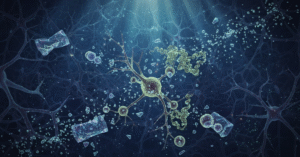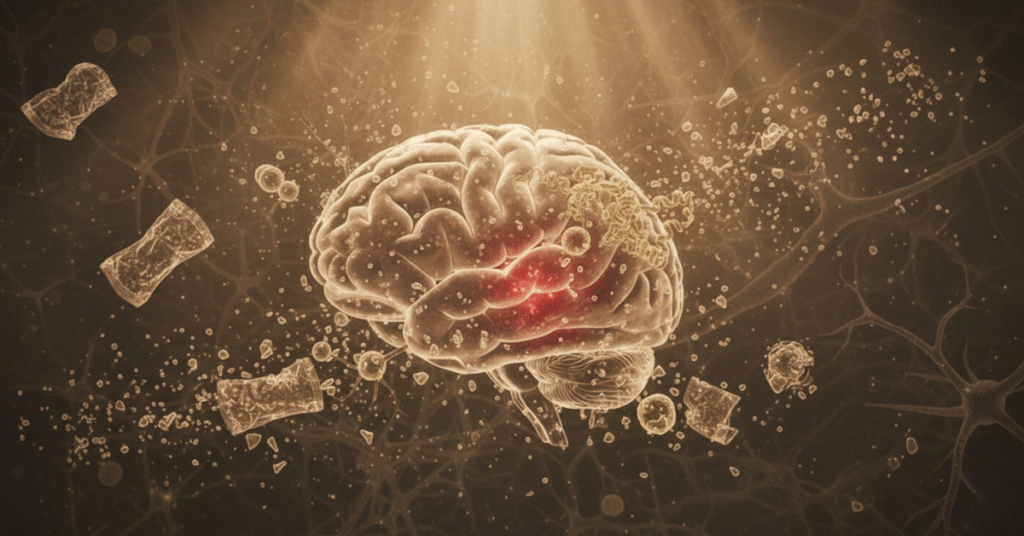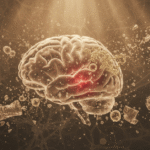The plastic waste link to Parkinson’s disease is not a theory; it’s one of the most urgent, science-backed facts to emerge from current 2025 research. As someone deeply involved in uncovering facts, I’ve spent countless hours studying the causes behind the world’s most mysterious and devastating illnesses. Few topics have struck me as urgently as the dramatic rise of Parkinson’s Disease (PD). While we often focus on genetics, the latest and most alarming scientific evidence points towards a terrifying, ubiquitous enemy: the microscopic remnants of the plastic trash filling our environment. The fact is, the water we drink and the air we breathe may contain tiny particles that directly accelerate this brain disorder.
What is the Real Plastic Waste Link to Parkinson’s Disease?
For years, scientists knew that environmental toxins like certain pesticides played a role in Parkinson’s. However, the discovery of a link to plastic is relatively new and far more concerning because plastic is everywhere. This connection centers on particles called nanoplastics—fragments so minute they are measured in billionths of a meter.
These nanoplastics are created when our discarded plastic (like that used in foam packaging or disposable cutlery, specifically polystyrene) breaks down. They are small enough to be airborne, pass through our digestive system, and most critically, breach the brain’s main line of defense: the blood-brain barrier. Once in the brain’s delicate environment, they don’t just sit there; they actively interfere with key biological machinery, initiating a catastrophic sequence that leads to the classic symptoms of Parkinson’s.
The “Two-Hit” Attack: How Nanoplastics Sabotage Neurons

The latest research, a major finding in 2024, describes the nanoplastics’ impact as a “two-hit” mechanism that dramatically increases the risk and progression of the disease. This is the core detail often missing or over-complicated in other articles:
Hit 1: Accelerating Toxic Clumping
The hallmark of Parkinson’s is the death of brain cells that produce dopamine. This cell death is caused by the toxic buildup of a misfolded protein called alpha-synuclein. Normally, this protein is harmlessly recycled. But the research showed that nanoplastics, particularly those from polystyrene, possess a unique property:
- They bind tightly to the alpha-synuclein protein.
- This binding acts as a catalyst, forcing the protein to rapidly contort and aggregate into the stiff, poisonous structures known as fibrils or clumps.
Essentially, the nanoplastics are putting the formation of the disease on fast-forward. They are speeding up the very process that is meant to take decades.
Hit 2: Breaking the Brain’s Garbage Disposal
Brain cells have a sophisticated cleaning crew called the lysosome, which functions as the cell’s internal recycling and garbage disposal system. Its job is to detect and break down these toxic alpha-synuclein clumps before they can kill the cell.
- When nanoplastics enter the neuron, they travel directly into the lysosomes.
- The plastics disrupt the lysosome’s function, slowing its ability to clear the alpha-synuclein debris.
This is the ultimate sabotage: the plastics both create the mess (Hit 1) and then jam the cleaning crew (Hit 2). The accumulation of protein is unchecked, leading directly to neuronal damage and, ultimately, Parkinsonian pathology. Understanding this plastic waste link to Parkinson’s disease is vital for any future treatment or prevention strategy.
A Call to Action and a Serious Environmental Fact
When I first read the full details of this study, I was genuinely shocked. It’s no longer an abstract concept that plastic pollution is bad for the planet; this research makes it a terrifyingly personal health crisis. The increasing prevalence of nanoplastics in our water and food supplies directly translates to a quantifiable, internal health risk for neurological diseases.
This fact is about more than just trash; it’s about the invisible poisons we are now forced to live with. To protect ourselves, we must push for immediate, global action to reduce single-use plastics—the primary source of the polystyrene contaminants implicated in this discovery. The sheer volume of this crucial and frightening information reinforces why focusing on the genuine plastic waste link to Parkinson’s disease is the most important thing we can do right now.
This is a powerful, science-backed fact that every reader should know.






